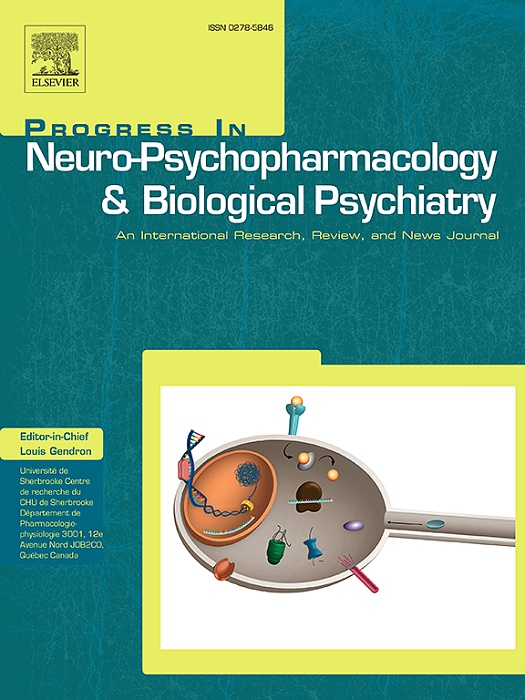伴有或不伴有抑郁症的慢性失眠症患者个体大规模功能网络连接和拓扑结构异常。
IF 5.3
2区 医学
Q1 CLINICAL NEUROLOGY
Progress in Neuro-Psychopharmacology & Biological Psychiatry
Pub Date : 2024-10-03
DOI:10.1016/j.pnpbp.2024.111158
引用次数: 0
摘要
失眠症越来越普遍,与抑郁症有很大关联。界定伴有或不伴有抑郁症状的慢性失眠症(CID)的特定神经回路,是发展精准诊断和治疗的基础。在这项研究中,我们研究了伴有(CID-D)和不伴有抑郁症的慢性失眠症个体大规模功能网络的静态、动态和网络拓扑变化,以揭示其特定的神经基础。通过正则化非负矩阵因式分解技术,我们获得了 17 个特定个体的大脑功能网络。在认知控制网络、背侧注意网络、视觉网络、边缘网络和默认模式网络内部或之间,发现了 CID 和 CID-D 在静态和动态大规模功能网络连接性方面的疾病共享性和特异性差异。此外,CID 和 CID-D 组显示出受损的网络拓扑结构,包括小世界特性、聚类系数和模块性降低,表明网络效率降低和功能分离受损。此外,神经影像学指标的改变与临床表现有显著关联,可作为有效的神经标记物来区分健康对照组、CID 组和 CID-D 组。总之,这些发现为研究 CID 和 CID-D 的神经基础提供了新的视角,有助于开发新的诊断和治疗方法。本文章由计算机程序翻译,如有差异,请以英文原文为准。
Aberrant individual large-scale functional network connectivity and topology in chronic insomnia disorder with and without depression
Insomnia is increasingly prevalent with significant associations with depression. Delineating specific neural circuits for chronic insomnia disorder (CID) with and without depressive symptoms is fundamental to develop precision diagnosis and treatment. In this study, we examine static, dynamic and network topology changes of individual large-scale functional network for CID with (CID-D) and without depression to reveal their specific neural underpinnings. Seventeen individual-specific functional brain networks are obtained using a regularized nonnegative matrix factorization technique. Disorders-shared and -specific differences in static and dynamic large-scale functional network connectivities within or between the cognitive control network, dorsal attention network, visual network, limbic network, and default mode network are found for CID and CID-D. Additionally, CID and CID-D groups showed compromised network topological architecture including reduced small-world properties, clustering coefficients and modularity indicating decreased network efficiency and impaired functional segregation. Moreover, the altered neuroimaging indices show significant associations with clinical manifestations and could serve as effective neuromarkers to distinguish among healthy controls, CID and CID-D. Taken together, these findings provide novel insights into the neural basis of CID and CID-D, which may facilitate developing new diagnostic and therapeutic approaches.
求助全文
通过发布文献求助,成功后即可免费获取论文全文。
去求助
来源期刊
CiteScore
12.00
自引率
1.80%
发文量
153
审稿时长
56 days
期刊介绍:
Progress in Neuro-Psychopharmacology & Biological Psychiatry is an international and multidisciplinary journal which aims to ensure the rapid publication of authoritative reviews and research papers dealing with experimental and clinical aspects of neuro-psychopharmacology and biological psychiatry. Issues of the journal are regularly devoted wholly in or in part to a topical subject.
Progress in Neuro-Psychopharmacology & Biological Psychiatry does not publish work on the actions of biological extracts unless the pharmacological active molecular substrate and/or specific receptor binding properties of the extract compounds are elucidated.

 求助内容:
求助内容: 应助结果提醒方式:
应助结果提醒方式:


